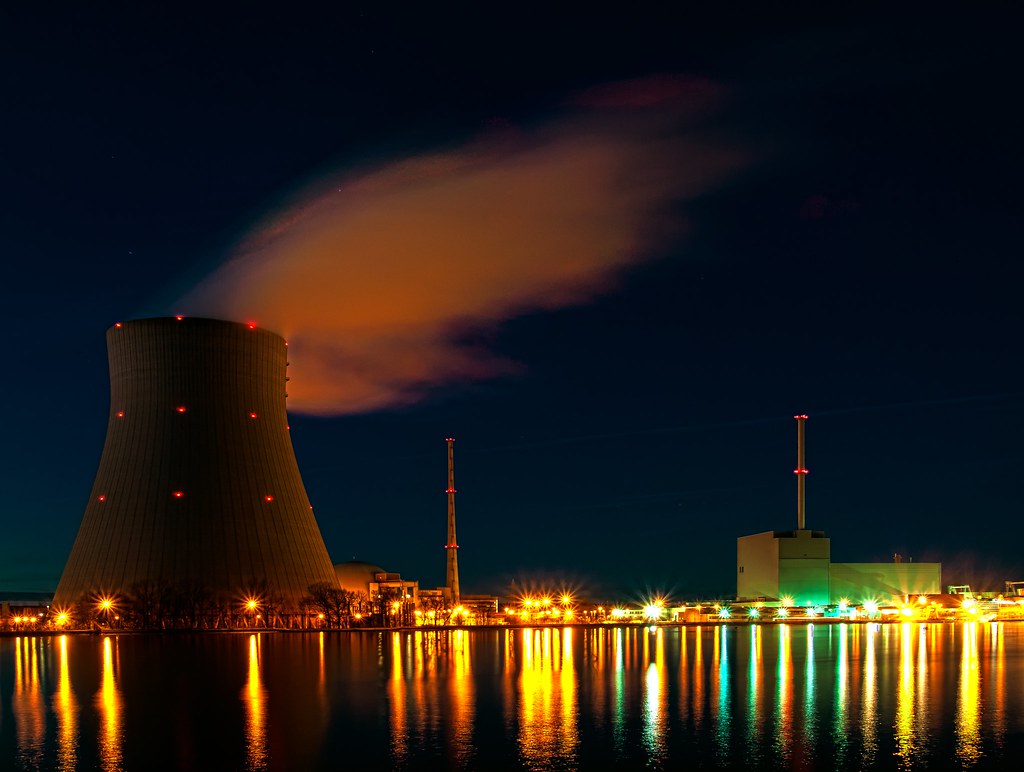As damage to the environment is becoming an increasingly prominent concern in the modern world, many societies and organizations are combating this issue through one of the most integral aspects of everyday life: electricity. Traditional forms of energy production, such as those that come from coal and natural gas, are becoming less desired sources of energy because they produce relatively high amounts of carbon dioxide, one of the most notable greenhouse gases. Of the low-carbon energy sources, nuclear power has been gaining traction across the globe because it is known for its reliability and zero carbon emissions.
With nearly 440 nuclear power plants running in 30 countries, nuclear energy supplies approximately 14% of the world’s electricity (Joskow and Parsons 45). However, certain economic considerations pose potential limits to the feasibility and prospect of constructing nuclear power plants on a large scale. When determining the economic competitiveness of nuclear power, the three key factors to be evaluated are its construction and management costs, the price of carbon emissions and fuel, and the stability of electricity prices.
Before a nuclear power plant project can begin, assessing the costs of creating the plant is of paramount importance. Lazard, an international investment banking firm, reported that the capital costs for nuclear power can range from $6,500 to $12,250/kW, which is nearly six to eight times the $1,150 to $1,500/kW range for onshore wind and the $700 to $1,300/kW range for gas combined cycle (10). Such comparisons can immediately cause potential investors in nuclear power to hesitate, but because different forms of energy production have different needs in the short term regarding operation and management, factoring in these variable costs provides a more complete picture of the actual costs of an energy source.
One metric that incorporates these considerations is the levelized cost of electricity (LCOE), which Lazard projects to be $112 to $189/MWh for nuclear power, $29 to $56/MWh for onshore wind, and $41 to $74/MWh for gas combined cycle, demonstrating just the beginning of how nuclear power’s low operating costs cause it to be much more competitive with others (17-18). The LCOE is helpful to investors because it projects the price of electricity needed for an energy source to cover its costs. However, this measurement does not factor in the efforts needed to direct energy toward a power grid, making comparisons between controllable and unpredictable energy sources difficult for policy makers. The OECD Nuclear Energy Agency, a global organization that works to implement environmentally friendly, economical, and peaceful operations of nuclear energy, noted that because solar and wind power must account for unexpected shifts in system costs from sun and wind availability, these costs increase by more than fivefold from a 10% solar and wind share to a 75% one (14). Nuclear energy thus presents high upfront capital costs but can still be economically competitive because of its low maintenance costs and reliability when producing energy.
Another characteristic that keeps nuclear power largely relevant is its stability regardless of carbon and fuel price fluctuations. The International Energy Agency (IEA), an intergovernmental agency that develops energy policies to ensure sustainability around the world, reported that at a moderate cost of $30 per tonne of carbon dioxide, nuclear energy is projected to have the lowest costs in 2025 of all the dispatchable low-carbon sources, most notably coal and gas, and in the long term “remains not only the least cost option for low-carbon generation…but for all power generation across the board” (“Projected Costs…2020”). With efforts to reduce carbon emissions accelerating due to initiatives like the Paris Agreement, environmentalists and policy makers will be looking to regulate rising global temperatures and the prices of carbon as a result.
Stephen Peake, a professor of Climate Change and Energy at the Open University, and Paul Ekins, a professor of Resources and Environmental Policy at the University College London, observe how carbon pricing has demonstrated a threefold increase from 2006 to 2016 and comment that carbon pricing will have to be much greater than $140 per tonne for the goal of a less than 2ºC increase of global temperature to be reached (874). This indicates that if carbon prices can continue to increase in the future, nuclear power will be significantly cheaper compared to other sources of energy that produce more carbon emissions. In a similar manner, nuclear energy has an advantage regarding fuel prices because a doubling of the price of uranium only increases the price of the electricity it generates by 10%, which is much less than the 70% for gas-produced electricity and the 25% for coal-produced electricity, as reported by the IEA (“Projected Costs…2010”). These findings demonstrate that the relative stability of nuclear power can considerably boost its competitiveness with other forms of energy production but still depends greatly on the prices of carbon and fuel.
In addition to demonstrating that nuclear energy is affordable and stable, ensuring electricity prices are predictable and fairly constant increases the chance that a nuclear power plant project will be executed. Nuclear power plants introduce a relatively great amount of risk to investors because they have a high fixed to variable cost ratio and investors will have to pay high costs for the capital construction before earning any actual revenue (“Financing Nuclear Energy”). Uncertainty in the construction and performance of nuclear power plants can lead to greatly increased costs, as exhibited by the 50% increase in costs after a nuclear power plant in Olkiluoto, Finland took three years longer than expected to be built, as noted by Geethanjali Monto in his publication from the peer-reviewed journal Current Science (834).
In regulated markets, a tariff can be placed on customers to promote a stability in electricity prices that helps make sure investors earn back what they initially paid, but in deregulated markets, there is no guaranteed security because investors cannot rely on tariffs. In this case, maintaining stable electricity prices can be complemented by long-term agreements between the electricity operator or seller and the customer or a representative body to reduce the risk related to investments in nuclear energy. These methods have been introduced to various countries, such as Turkey where 70% of the production from two units of the Akkuyu nuclear power plant was covered by the agreement, substantially lowering uncertainties for investments (“Financing Nuclear Energy”). Because the core of any nuclear power plant project rests in the hands of the investors, financial risks relating to electricity prices need to be minimized in order to encourage funding and the progress of nuclear power plant projects.
With their reliability and zero carbon emissions, nuclear power plants propose a promising solution to finding clean energy to mitigate human impacts on the environment. These benefits of nuclear power can often be overlooked when considering their high capital costs and the unpredictability of market prices for carbon, fuel, and electricity. However, such perspectives often discount the performance of power plants in the long term and the negotiations that can be made between buyers and sellers of electricity. Because nuclear energy has the potential to serve as a valuable source of energy, governments should work to model their economy and shape the design of nuclear power plants as needed to promote the most sustainable economic future.
References
“Financing Nuclear Energy.” World Nuclear Association, Oct. 2020, https://world-nuclear.org/information-library/economic-aspects/financing-nuclear-energy.aspx.
Joskow, Paul L., and John E. Parsons. “The Economic Future of Nuclear Power.” Daedalus, vol. 138, no. 4, 2009, pp. 45–59., doi:10.1162/daed.2009.138.4.45.
Lazard’s Levelized Cost of Energy Analysis—Version 12. Lazard, Nov. 2018, www.lazard.com/media/450784/lazards-levelized-cost-of-energy-version-120-vfinal.pdf.
Monto, Geethanjali. “The Economics of Nuclear Power.” Current Science, vol. 101, no. 7, Temporary Publisher, 2011, pp. 832–34, http://www.jstor.org/stable/24079112.
Nuclear Energy Agency. The Costs of Decarbonisation: System Costs with High Shares of Nuclear and Renewables. Organization for Economic Co-operation and Development, 2019, https://www.oecd-nea.org/jcms/pl_15000.
Peake, Stephen, and Paul Ekins. “Exploring the Financial and Investment Implications of the Paris Agreement.” Climate Policy, vol. 17, no. 7, 2016, pp. 832–52. Crossref, doi:10.1080/14693062.2016.1258633.
Projected Costs of Generating Electricity 2010. International Energy Agency, 2010, https://iea.blob.core.windows.net/assets/6a568ef2-46b7-44f4-b917-89316cb961b8/projected_costs.pdf.
Projected Costs of Generating Electricity 2020. International Energy Agency, Dec. 2020, https://www.iea.org/reports/projected-costs-of-generating-electricity-2020.

